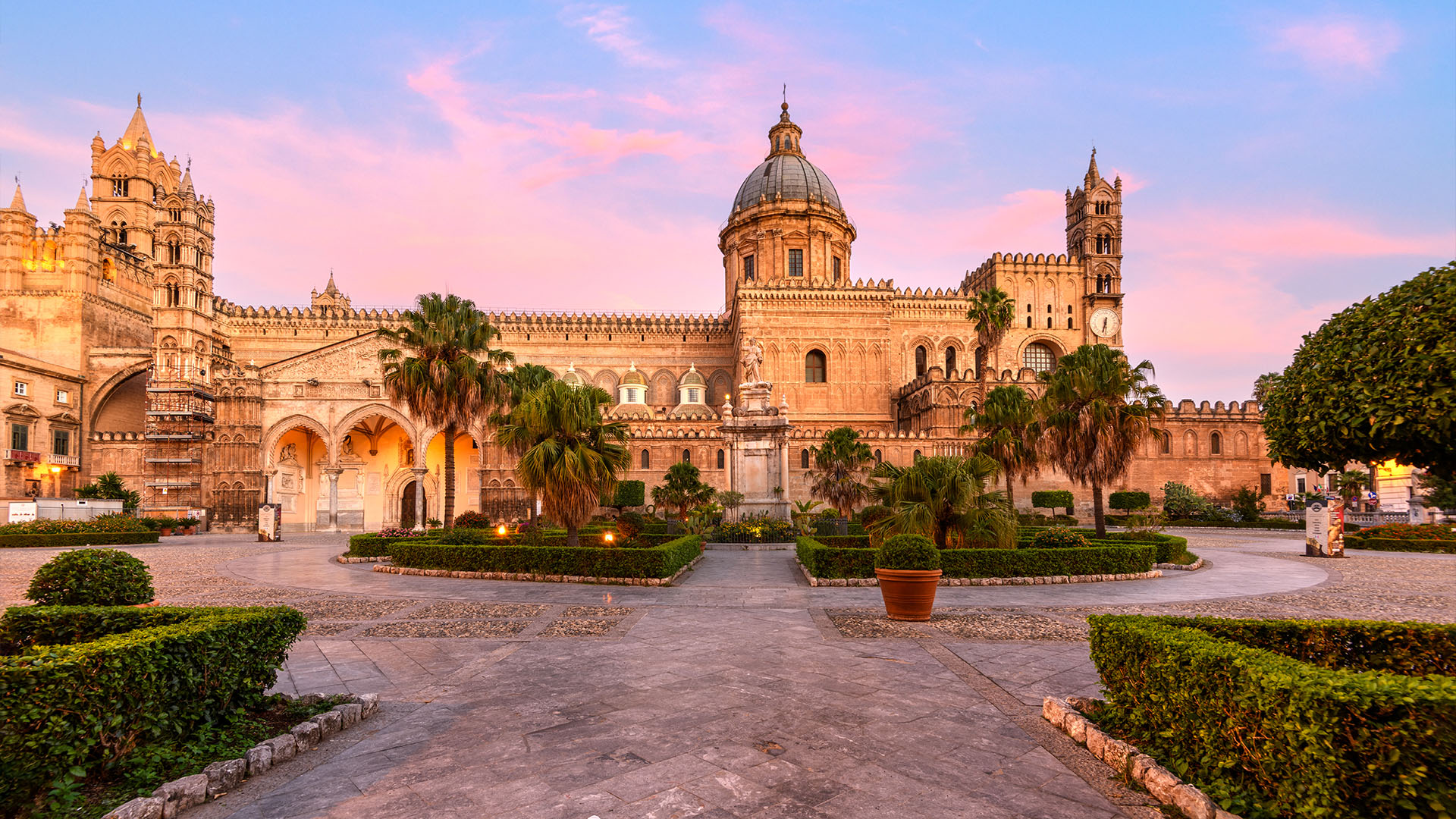
A day in Palermo: between art and culture
Just over an hour from Cefalù, Palermo welcomes visitors with its lively spirit, monumental architecture and that unique atmosphere in which centuries of domination, religions and traditions are intertwined. Our itinerary to discover the Sicilian capital can start from Piazza Giulio Cesare, also known as Piazza Stazione, dominated by an elegant building that mixes neoclassical and liberty style. In the center stands the statue of Vittorio Emanuele, ideal starting point to go through the most emblematic streets of the city.
From here they branch off via Roma, modern and hectic, and , authentic historical heart, where the past meets the present. Walking along via Maqueda means crossing centuries of history and cultures: ancient shops alternate with ethnic shops, and the aroma of spices mixes with the voices of passers-by. The presence of the mosque in via Giosafat testifies to the continuous transformation of this street, today a symbol of multicultural Palermo.
Continuing, you will arrive at the bustling market of Ballarò, at the crossroads between tradition and daily life. Just beyond, there are memorable views such as the Quattro Canti, a scenic intersection that combines art and urban symmetry, and the evocative Piazza Pretoria, famous for its Renaissance fountain decorated with mythological figures and sculpted nudity that earned it the nickname of Piazza della Vergogna.
Not far away, in via Bellini, stands the splendid Church of Santa Caterina d’Alessandria, a triumph of polychrome marbles and baroque decorations. Once a convent for young noblewomen, today it leaves you breathless by its artistic richness and the solemn silence that permeates its environments.
From here, the step is short to another baroque jewel: the Church of Jesus, also known as Casa Professa. From the sober exterior, you can’t imagine the magnificence of the interior: inlaid marbles, frescoes, columns and sculptures transform its three naves into a symphony of colors and forms, symbol of the apex of the Sicilian Baroque.
It’s lunchtime, and there is no better place to taste Palermo than among the stalls of the Ballarò market. Fresh fish, fruits, cheeses and spices invade the senses, while the voices of the sellers – the inevitable ones – give rhythm to the experience. Here, you eat with your hands and with your heart, between arancine, panelle and raw flavors.
In the afternoon, we enter the Jewish quarter of Harat al Yahud, where traces of the Jewish presence are still felt. Among the alleys that bear the names of the ancient areas – La Meschita and La Guzzetta – you can breathe the memory of an era that has left deep marks, such as the Municipal Historical Archive and the Church of San Nicolò da Tolentino, built on the old synagogue.
The tour continues to one of the most iconic symbols of the city: the Church of San Giovanni degli Eremiti, with its unmistakable red domes that tell the meeting between East and West. Former mosque transformed into a church, it perfectly represents the dialogue between cultures that characterizes the identity of Palermo.
Our trip ends in Piazza Indipendenza, the city’s institutional and historical crossroads. Here you will find the majestic Porta Nuova, the imposing Palazzo dei Normanni and the extraordinary Cappella Palatina, one of the most valuable examples of Arab-Norman art. To close the circle, the green gardens and the obelisk dedicated to the Martyrs of Italian Independence.
